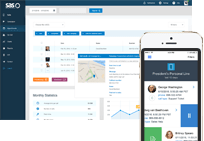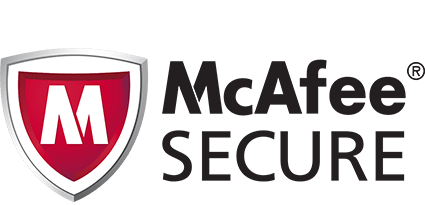- Log In
- Support
- Company
- Contact Us
- Live answers @ 1-888-532-4794
The Report From Support: Best Practices for Strange Outsourcing Requests
If your business is new to using an answering service, you may have questions about what an answering service is capable of. For example, you may want to know if the operators can access your software, if they can sound like they are working in your office, or if they can transfer calls to international numbers.
While most live operator services give you the ability to customize nearly every aspect of your account, there are some things answering services just can’t do as well as you can in your own office. Some of the things you do in-house, like answering complicated billing calls or reading MLS data to a prospect, aren’t going to translate well to an outsourced environment. Below are 6 real examples of requests our support team has received from customers, and how we’ve worked to find solutions.
Request #1: “I don’t provide _____ service, but I want to tell the caller that the on-call technician can’t come out for another 3 hours due to technical issues. I just don’t want it to look like I don’t provide _____ service.”
While we can definitely give callers specific time frames of when they should be expecting someone, this particular customer request is bad business.
The issues:
- First, the caller is being misled. If you don’t do the requested service, it’s better to be honest with the caller up-front and let them know.
- Second, what happens if the caller is cool with the 3 hour time frame? Since the business doesn’t handle these types of service requests, no one would be showing up in 3 hours, which would be bad. When we asked the client this, they advised that most people will simply hang up and move on to the next business. If the caller didn’t hang up and move on, they would call back later furious that no one has shown up to help.
What should happen:
An answering service should be direct and honest with the caller. If a business doesn’t do something, the operator should say something like:
“I apologize, but unfortunately we do not provide that service. Thank you for calling and enjoy your day.”
If the response isn’t something scripted, it’s always helpful to have a list of services in the FAQs to reference to avoid this conflict, or even just a list of services you get asked about a lot but don’t perform. Having the virtual receptionists weed out these calls will not only lower the call volume (and invoices), but it will also help avoid unhappy callers.
Request #2: “Can you please say ‘Mr. ___ is in a meeting right now?’ I don’t want it to seem like I am using an answering service.”
This is actually a fairly common request that we receive, and we always advise against it.
The issues:
- Since we are a 24/7 answering service, if someone calls in at 2am or on Christmas Day, we would still be telling them you’re in a meeting.
- While we can put in different responses based on the day and time a call is received, the ‘in a meeting’ response 100% of the time typically doesn’t seem legit. In addition, the caller may ask to hold until the person is available.
- If a caller hears this, they may assume their call will be returned as soon as the meeting is over.
What should happen:
We’d want to keep the response simple and straight forward so that no one thinks they’re being deceived. Our agents would typically say something like:
“I would be happy to help you reach Mr. ___. I just need to gather some basic information so I can have your call returned.”
Then, we can proceed to gather the caller’s information. This way, the caller is speaking to a live person so they feel like they are being heard without being given false information. Plus, if every time they call in they’re told the person they are calling for is in a meeting, they may start to become suspicious – or jealous since everyone loves meetings!
Request #3: “Can the operators search through a Google Sheet that contains every zip code in every state in the country? The on-call schedule we want you to use will be updated on the sheet.”
Google Sheets is a great tool, but there’s a right time to use it – unfortunately, this isn’t one of those times.
The issues:
- Manually sifting through a monster document like this can result in the answering service operator selecting the wrong on-call person.
- Having someone page through a big document takes time, which would make for an unpleasant experience for the caller.
- Longer calls means higher invoices, which would make for an unpleasant invoice for the business owner.
What should happen:
The best course in this case is to program this information into the script. It would take some pretty extensive programming, but ultimately it’s the only way to make sure callers are assisted accurately. If the answering service leaves it up to chance, a technician in Oregon could get an on-call dispatch from a customer in Ohio. That would stink.
Request #4: “I’d like to update the operator’s greeting to: ‘Smile! It’s a great day at _______!’ or ‘Thanks for calling the region’s #1 _______ provider where customer service is our number one priority.”
Having an enthusiastic greeting is an awesome idea, and can definitely set a business apart from their competition. With that being said, having a remote receptionist deliver it with consistency may not work.
The issues:
- If a greeting is outside of the norm, your virtual receptionist may trip over their words making something supposed to be enthusiastic sound ultra unprofessional.
- Because virtual receptionists are deliberate when they read a script, the greeting may not come off as enthusiastically as it would coming from someone in the actual office.
- Since answering service agents handle thousands of different phone calls a day, they can’t practice each individual greeting. So, a custom greeting like this may sound unnatural.
What should happen:
If a client wants to parallel the greeting they use in their own office, it’s best to add this as a custom recorded message on the line instead. That way, the answering service can eliminate the chance of human error and can continue providing amazing live support.
Request #5: “I need the operators to take payment information. But first, they need to read the entire terms and conditions from my website so the caller can verbally accept them.”
One of the great things about our service is that our virtual receptionists do have the ability to process payments. However, there are some restrictions when it comes to implementing this.
The issues:
- If we are taking payments, our secure call center technology allows us to turn off call recordings prior to accessing the website so that credit card information stays protected. Because of this, there would be no proof that the caller agreed to the terms.
- If we were to put the terms and conditions into the script, it would be a disaster. We definitely do not recommend inserting large blocks of text as it’s a lot for the agents to scroll through and read.
- Terms and conditions are generally pretty lengthy. Having our operators read them to every caller would drastically increase the call length and jack up your invoices. Yikes!
What should happen:
If the caller needs to agree to a long list of terms and conditions to make a payment, we recommend that the operator refer the caller to the website to make the payment or complete the order on their own.
Request #6: “I have a Google Doc with a list of people that you are allowed to say I will call back ASAP. The operators will need to search through it because otherwise I want you to let the caller know I’ll call them back in 5 days.”
Google Docs is another great tool to reference for general information. However, it is not the most helpful when it comes to actual scripting.
The issues:
- Let’s say John Smith calls in. He’s given that time frame of “ASAP”, but the client was actually waiting for a call from John Smythe. Whoops!
- If an operator is going right to this Google Doc from the jump, they probably did not have the chance to verify the caller’s name, which could have lead to the mistake mentioned above.
- We recommend not having scripted actions handled outside of the script itself.
What should happen:
If a client asks for this, they’re probably having a hard time catching their breath at the office and keeping up with their return calls. We can implement a “Multiple Times Calling” path so that messages are notated differently. This way, the client can log into their portal and filter call results to prioritize call backs!
As an answering service who excels in providing great customer support, we welcome all requests! We will always be transparent with you and let you know when something will not work. After all, our #1 goal is to make sure someone is always there to answer your phone and represent your business well. If there’s anything you do in your own office, our support team will always work to find a creative solution to suit your business needs!
Categories
- Advice (32)
- Answering Service 101 (18)
- Best Practices (10)
- Call Center Jobs (6)
- Call Center Software (20)
- Comparison (2)
- Customer Service (30)
- Funny (31)
- Holidays (19)
- Industry Hacks (19)
- Infographics (53)
- International (1)
- Medical (8)
- News (12)
- Phone Etiquette (2)
- Phones (14)
- Pricing (8)
- Quizzes (3)
- Receptionist (11)
- SAS Products (29)
- Scripting (4)
- Services (5)
- Small Business (25)
- Starting Up (7)
- Tips and Tricks (19)
- Uncategorized (1)
- Videos (19)
- Workplace (6)
Recently writen
- Call Center Script Best Practices: Advanced Script Block Tips to Optimize Your Answering Service
- January 2025 Release Notes – Adjustments to Call Details Timeline, New Scripting Updates, Live Transcription, and more!
- April 2024 Release Notes – Voicemail Greetings, Ability to Access Websites With a Username and Password, and more!
- March 2024 Release Notes – New Add-On, Settings Revamp, and more!
Follow Us
How about a demo?
We'll show you how our web portal works and answer any questions you have about SAS.
Schedule a demo







